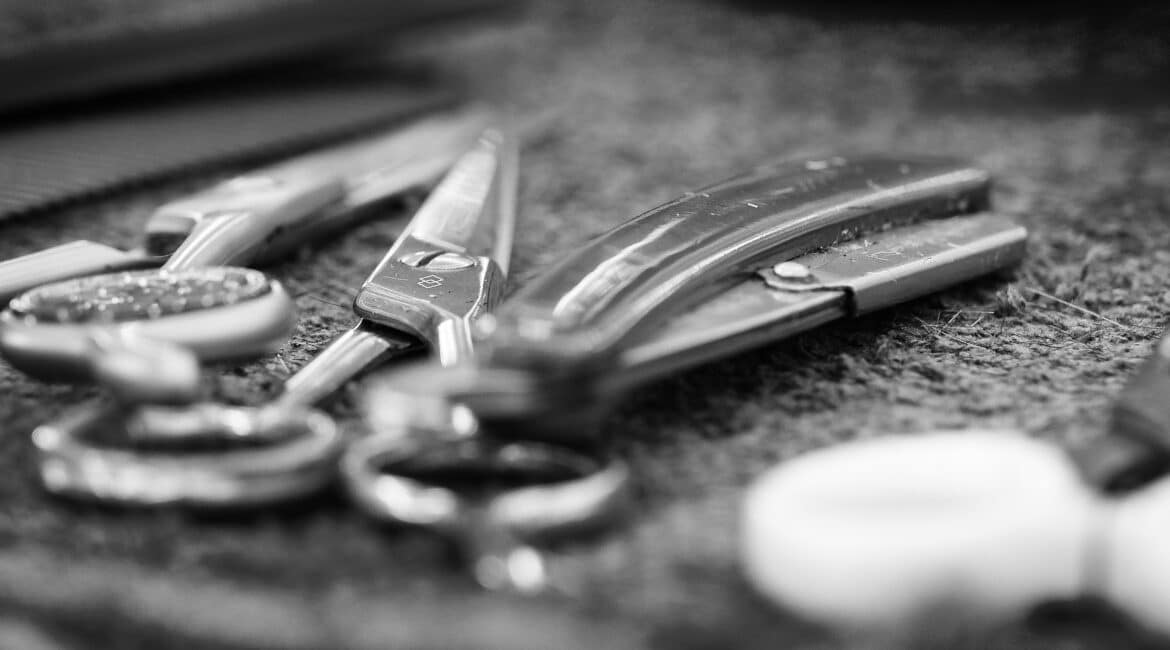Introduction
In the world of hairstyling, precision and hair shear sharpness are non-negotiable. Sharp shears are essential for delivering flawless cuts, ensuring client satisfaction, and extending the lifespan of your tools. Knowing how to effectively test the sharpness of your shears can save time, improve performance, and enhance your overall craft. This guide covers the most reliable methods.
For additional insights into hairstyling tools, check out this Allure article on hairstyling trends or Vogue’s guide to professional hairstyling tools.
Method 1: The Tissue Test (Primary Test)
Understanding hair shear sharpness is crucial for every stylist aiming for perfection in their work and maintaining optimal performance of their tools.
Materials Needed:
- Single-ply facial tissue
- Clean, dry surface
Steps:
- Take a single sheet of facial tissue.
- Hold it suspended in the air.
- Position your shears at approximately a 45-degree angle.
- Make a precise cutting motion through the tissue.
Results Interpretation:
- Sharp Shears: A clean, smooth cut with no drag or snagging.
- Dull Shears: The tissue bunches, tears, or produces jagged edges.
The tissue test is a quick, easy way to evaluate shear sharpness and should be performed regularly for consistent results.
Method 2: The Wet Tissue Test (Advanced Test)
Materials Needed:
- Facial tissue
- Water spray bottle
Steps:
- Lightly dampen a single-ply tissue using a spray bottle.
- Hold the tissue taut between your fingers.
- Cut through the tissue in a straight line.
- Observe the cutting action.
Results Interpretation:
- Sharp Shears: Produces a clean, straight cut with no folding or resistance.
- Dull Shears: The tissue pushes, folds, or shows irregular cuts.
This advanced test mimics real-world scenarios, especially when cutting damp or thick hair, making it a valuable tool in assessing your shears’ effectiveness.
For more tips on keeping tools sharp and effective, visit our Japanese steel shears collection.
Method 3: The Tension Test
Steps:
- Open your shears so the blades form a 90-degree angle.
- Hold the shears by the thumb ring.
- Allow the top blade to fall naturally by gravity.
- Observe the blade’s movement.
Results Interpretation:
- Proper Tension: The blade falls smoothly and meets the other blade in a controlled motion.
- Poor Tension: The blade either drops too quickly or resists closing, indicating the need for tension adjustment.
Proper tension is crucial for sharpness and performance. Regularly checking tension ensures your shears remain in peak condition.
Visual Inspection
A simple visual inspection can often reveal issues before they impact performance. Look for:
- Visible Nicks: Tiny imperfections along the blade edge.
- Shiny Lines: Indicate a dulled cutting edge.
- Uneven Spots: Could signal improper sharpening.
- Blade Alignment: Ensure both blades meet evenly when closed.
These signs are early indicators that your shears may need professional attention. Learn more about maintaining premium shears here.
Professional Tips for Accurate Testing
- Always test shears at the start of your workday.
- Clean the blades thoroughly before testing to remove debris or residue.
- Maintain a consistent testing routine to track performance over time.
- Document sharpening and maintenance dates for reference.
- Test shears in well-lit environments to ensure accurate observations.
For expert advice, refer to Elle’s comprehensive hairstyling tool guide.
Warning Signs of Dull Shears
Ignoring dull shears can lead to bigger problems. Watch out for:
- Pushing or folding hair instead of cleanly cutting.
- Uneven or inconsistent cutting results.
- Increased hand fatigue after extended use.
- Audible scraping sounds during operation.
- Complaints of discomfort from clients.
If you notice these signs, it’s time to take action.
Maintenance Recommendations
Proper maintenance extends the life of your shears and ensures they perform at their best. Follow these guidelines:
- Professional Sharpening: Schedule sharpening every 6-8 months, depending on usage.
- Daily Cleaning: Wipe blades clean after each use to remove hair and residue.
- Protective Storage: Always store shears in a case to prevent damage.
- Tension Adjustments: Check and adjust tension regularly to maintain optimal performance.
- Handle with Care: Avoid dropping or mishandling to prevent nicks and misalignment.
Conclusion
Regularly testing your shears’ sharpness isn’t just about maintaining tools—it’s about ensuring the highest level of professionalism in every cut. By incorporating these methods into your routine, you’ll not only extend the life of your shears but also enhance the quality of your work. After all, sharp tools make for sharper results, and sharper results lead to happier clients.
Visit our premium hairdresser shears collection to explore tools that elevate your craft and ensure exceptional performance every time.



